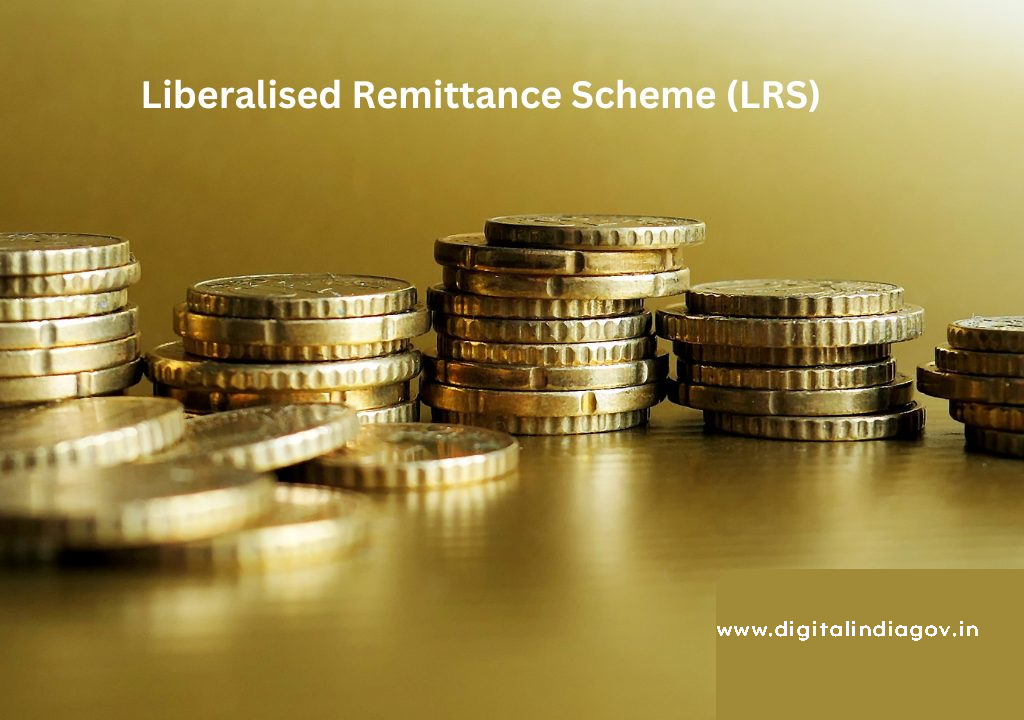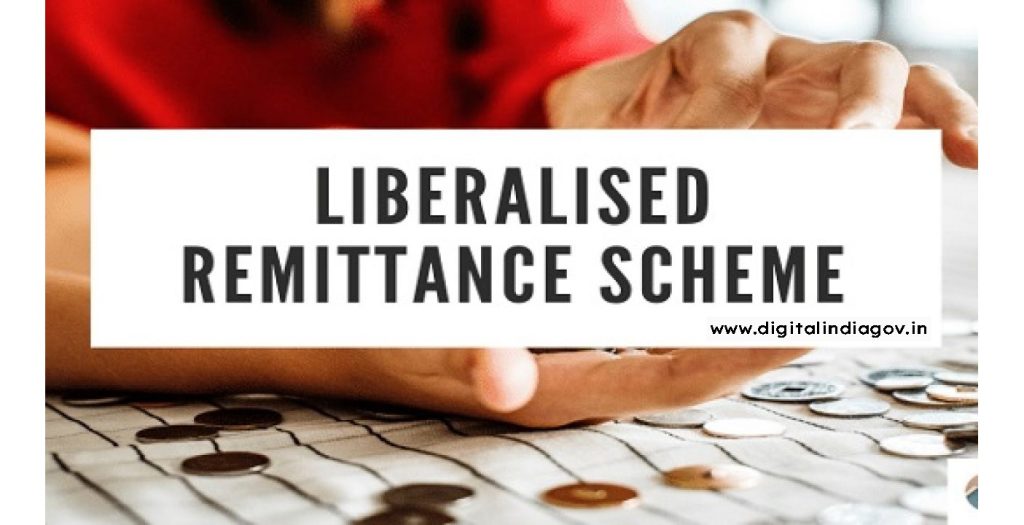Liberalised Remittance Scheme:- Indians who live overseas for work, school, or other reasons frequently require financial support from their friends and family back home. However, prior to 2004, the Foreign Exchange Management Act of 1999 imposed stringent limitations on the transfer of funds from India to other nations.
For this reason, the Reserve Bank of India (RBI) created the LRS to enable easy international transactions. To learn more about this scheme in detail, scroll down.
Contents
What is LRS?
The acronym for the Liberalised Remittance Scheme is LRS. The Reserve Bank of India launched this project in 2004 to modify the country’s foreign exchange policies. Its goal was to make sending money outside of India easier and more efficient.
With the use of this program, Indians were able to get around the Foreign Exchange Management Act (FEMA) of 1999’s prohibitions on overseas financial transfers. Residents may transfer money freely under LRS for a variety of approved current or capital account transactions, up to a predetermined amount.

Also Read:- Disadvantages Of Senior Citizen Savings Scheme, Digitize India, Digitize India Platform, Work From Home Jobs, Celebrity Phone Number
LRS scheme for NRIs
Savings accounts are used for remittances because only Indian nationals are eligible for the LRS plan. Indian banks are prohibited from providing non-resident Indians with savings accounts. As a result, they are unable to send money from India, but they are able to send money from their NRO, NRE, and FCNR accounts overseas as long as they follow the rules and provide the necessary paperwork:
- They can withdraw up to $10,000 USD from an NRO account.
- Transferring money from an FCNR or NRE account is not subject to any restrictions.
- Indian nationals now have an easier time handling their foreign financial transactions thanks to the Liberalised Remittance Scheme.
- The money could be used for other commitments like paying off debt or paying for school. Additionally, investing outside of India is a fantastic way to diversify your portfolio of investments.
Liberalised Remittance Scheme availability
The following people and situations are eligible for the Liberalised Remittance Scheme:
- All residents, including minors and students, are eligible to use LRS, according to the Foreign Exchange Management Act.
- The eligible citizens need to possess a passport, a valid Permanent Account Number (PAN), and an Indian bank account.
- It is possible to utilize the remitted funds for business, education, or personal purposes.
Liberalised Remittance Scheme limit
A resident individual may remit up to USD 250,000 for approved transactions every fiscal year under the LRS. The aforementioned LRS restriction applies to investments, emigration, travel, education, healthcare, and employment, among other things. You cannot, however, use the remittances for any comparable purposes, such margin trading, purchasing real estate, or purchasing lottery tickets.
Tax on Liberalised Remittance Scheme
The taxation of gains from overseas investments made through LRS in India may be contingent upon the duration of the investment. Any capital gain that results from an investment held for more than two years is subject to a 20% tax on the total amount of the gain. Profits from investments made in less than two years are subject to standard income tax bracket rates.
If your remittances surpass Rs. 7,00,000, you would have to use the LRS system to pay a 5% TCS (Tax Collected at Source). On Form 26AS, you can, however, request a refund for the TCS that was withheld while completing your income tax return, or ITR.

Also Read:- Nrega Job Card New List 2024
RBI guidelines for outward remittance
Outward remittances are transfers of funds from an Indian account to a foreign account. If stipulated by the RBI, a demand draft issued in the name of the beneficiary or individual may be used to pay for outward remittances. In order to keep international accounts, you can also open a bank account outside of India. Here are a few actions you can do to follow suit:
- Select a bank branch to handle all payments; this branch must be an authorized dealer.
- Don’t forget to bring your PAN card.
- Observe the KYC (Know Your Customer) and anti-money laundering (AML) regulations.
- To buy foreign currency, complete Form A2.
- Finally, under LRS, banks are not allowed to offer any credit services to people.
Benefits of Liberalised Remittance Scheme in India
Here are a few noteworthy advantages of LRS:
- The LRS allows investors to diversify their portfolios by allowing them to purchase stocks, bonds, mutual funds, and real estate abroad.
- Education abroad: The Learning Remit System (LRS) allows people to send money for living expenses, books, and tuition fees. This makes it possible for students to enroll in universities and institutions abroad for higher education.
- Medical care: Through the LRS, anyone can send money to receive medical care outside of India. For people in need of expert medical care that is not available in India, this is very beneficial.
- Travel: Through the LRS, people can send money for things like airline tickets, hotel reservations, and other travel-related costs.
- Business projects and start-ups may be financed by private investors under the LRS, as well as foreign companies. This facilitates business owners’ and entrepreneurs’ international business expansion.
- Donations and gifts: Through the LRS, people can give money to charity organizations outside of India or to relatives.
Since its introduction, the Liberalised Remittance Scheme has enabled international trade, foreign investment, and other activities. To ensure a smooth transaction, you must adhere to the Liberalised Remittance Scheme’s rules, particularly with regard to eligibility and documentation.
Documents For Liberalised Remittance Scheme
An individual must choose a branch of the licensed dealer to handle transactions for the Liberalised Remittance Scheme. For remittance under LRS, each individual must provide Form A2 and a copy of their PAN. In addition, the person needs to follow anti-money laundering regulations. The last step is for the person to finish their KYC (Know Your Customer) information.

Also Read:- CG Bhuiya
FAQ’s
Q. What is the scheme for LRS?
Ans- For hassle-free foreign exchange, the RBI launched the Liberalised Remittance Scheme or LRS. An Indian resident may transfer up to USD 250,000 outside of India in a fiscal year under this arrangement.
Q. For whom is LRS appropriate?
Ans- LRS is available to Indian residents only, excluding corporations, partnership firms, HUFs, etc. As long as their guardian signs Form A2, even minors are qualified for LRS.
Q. What is the LRS limit at the moment?
Ans- For a given fiscal year, the Liberalised Remittance Scheme currently has a $250,000 cap. With the Reserve Bank of India’s prior approval, you are able to remit a larger sum.
Q. What advantages does LRS offer?
Ans- The LRS system has several advantages. It enables you to purchase goods made in other countries, diversify your financial portfolio, send money to family members who live outside for medical and educational expenses, etc.
Q. Is there a tax on LRS?
Ans- Gains on assets withholding periods longer than 24 months are subject to a 20% tax. If you want to transfer more than Rs 7,00,000, you must pay a 5% TCS.
Q. Can I use LRS to claim TCS?
Ans- Yes, you are eligible for a reimbursement of the TCS deduction. All you have to do is complete Form 26AS at the time of ITR filing.
Q. Are funds available to us under the Liberalised Remittance Scheme?
Ans-The Liberalised Remittance Scheme only covers the provisions related to sending money outside of India, or overseas remittance. The Foreign Contribution (Regulation) Act, of 2010, provides standards for Indian individuals and businesses regarding the acceptance and utilization of foreign revenue.
Q. The Liberalised Remittance Scheme was launched when?
Ans In 2004, the Reserve Bank of India launched the Liberalised Remittance Scheme. It simplifies the process of exchanging currencies.
Suggested Link:- Our Jharkhand
@PAY
